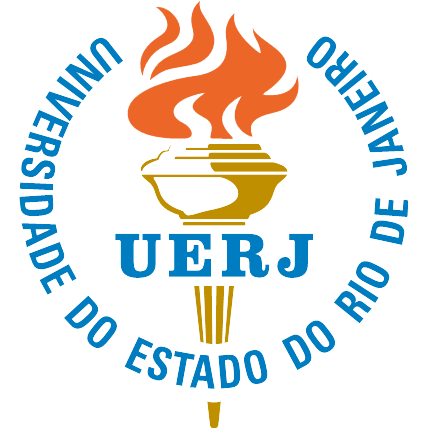School-attending adolescents' social representations about well-being
DOI:
https://doi.org/10.12957/reuerj.2025.86203Keywords:
Adolescent Health, Schools, Adolescent, Wellbeing, Social RepresentationAbstract
Objective: to analyze school-attending adolescents' Social Representation structure about well-being. Method: a qualitative study with the structural approach set forth in the Theory of Social Representations was conducted from June to November 2023 in a public school, with 108 adolescents aged between 12 and 18 incomplete years old. The following tasks were performed: free word association techniques, Mise en Cause test and prototypical analysis - EVOC® software. The research protocol was approved by the Research Ethics Committee. Results: the “health” cogneme represented the manifestation of the school-attending adolescents' social thought identity towards well-being, along with other elements from the central core, namely: “happiness”, “family” and “well-being”. The contents that structured the school-attending adolescents' social representations about well-being reiterate the polysemy and multidimensionality of the concept, encompassing physical, emotional, mental and social health. Final considerations: the social representations showed a broad and contextualized view of the concept, with potential to expand citizen awareness in favor of health.
References
1. Organização Mundial da Saúde. Saúde do adolescente e do jovem. Genebra: Organização Mundial da Saúde; 2022 [cited 2023 Mar 25]. Available from: https://www.paho.org/pt/topicos/saude-do-adolescente.
2. Casa Civil (Br). Lei no 8.069, de 13 de julho de 1990. Dispõe sobre o Estatuto da Criança e do Adolescente. Brasília (DF): Casa Civil; 2021 [cited 2024 Jan 28]. Available from: https://www.gov.br/mdh/pt-br/assuntos/noticias/2021/julho/trinta-e-um-anos-do-estatuto-da-crianca-e-do-adolescente-confira-as-novas-acoes-para-fortalecer-o-eca/ECA2021_Digital.pdf.
3. Kassis W, Janousch C, Sidler P, Aksoy D, Favre C, Ertanir B. Patterns of students' well-being in early adolescence: a latent class and two-wave latent transition analysis. PLoS One. 2022 [cited 2024 July 05]; 17(12):e0276794. DOI: https://doi.org/10.1371/journal.pone.0276794.
4. Gaspar T, Tome G, Ramiro L, Almeida A, Matos MG. Ecossistemas de aprendizagem e bem-estar: fatores que influenciam o sucesso escolar. Psic., Saúde & Doenças. 2020 [cited 2024 July 01]; 21(2):462-81. Availble from: http://scielo.pt/scielo.php?script=sci_arttext&pid=S1645-00862020000200021&lng=pt&nrm=iso.
5. Koehler SMF, Gonzales NGP, Marpica JB. A escola como promotora da saúde mental e do bem-estar juvenil: oficinas pedagógicas com adolescentes. Desidades. 2021 [cited 2024 July 10]; 29:168-85. Available from: http://pepsic.bvsalud.org/scielo.php?script=sci_arttext&pid=S2318-92822021000100011&lng=pt&tlng=pt.
6. Hanke ES, Câmara SG. Bem-estar na adolescência: papel da cidade e da comunidade. Rev. Psicol. Saúde. 2021 [cited 2024 July 07]; 13(1):51-63. DOI: https://doi.org/10.20435/pssa.v13i1.1029.
7. Ott MB, Meusburger KM, Quenzel G. Adolescents’ participation opportunities and student well-being in school. Front. Educ. 2023 [cited 2024 July 17]; 8:1111981. DOI: https://doi.org/10.3389/feduc.2023.1111981.
8. Demirci İ. School engagement and well-being in adolescents: mediating roles of hope and social competence. Child Ind Res. 2020 [cited 2024 July 17]; 13:1573-95. DOI: https://doi.org/10.1007/s12187-020-09722-y.
9. Sá MRC. Promoção da saúde e ações intersetoriais: foco no Programa Saúde na Escola. Cad. Saúde Pública. 2020 [cited 2024 July 17]; 36(3):e00001620. DOI: https://doi.org/10.1590/0102-311X00001620.
10. Nicholson C, Awad SH. The power of the image: the role of social representations. PSR. 2024 [cited 2025 Apr 21]; 33(1):1.1-9. Available from: https://psr.iscte-iul.pt/index.php/PSR/article/view/711/536.
11. Abric JC. L'approche struturale des représentations sociales: developments récents. Psychologie et société. 2001 [cited 2024 May 20]; 4(12):81-103. Available from: http://www.europhd.net/bibliographic-item/lapproche-structurale-des-repr%C3%A9sentations-sociales-d%C3%A9veloppements-r%C3%A9cents.
12. Aquino EC, Black TLP, Correia WMO, Silva, KVP. Social representations, adolescents and the issue of aging: a literature review. Revi. Contemp. 2024 [cited 2025 Apr 21]; 4(7): e5188. DOI: https://doi.org/10.56083/RCV4N7-171.
13. Souza VRS, Marziale MHP, Silva GTR, Nascimento PL. Translation and validation into Brazilian Portuguese and assessment of the COREQ checklist. Acta Paul Enferm. 2021 [cited 2024 May 05]; 34:eAPE02631. DOI: https://doi.org/10.37689/acta-ape/2021AO02631.
14. Prefeitura de Fortaleza. IDH-Fortaleza. Estudo sobre desenvolvimento humano por bairro em Fortaleza. Fortaleza: Prefeitura de Fortaleza SDE; 2022 [acesso 21 abr.2025]. Available from: https://dados.fortaleza.ce.gov.br/dataset/607f1ecf-73b3-4ef1-9a4f-0db2eb8c7b39/resource/f7cf7081-b0e3-4c9c-b89e-0ee1b3755437/download/indicededesenvolvimentohumano.xlsx.
15. Wolter R. The structural approach to social representations: bridges between theory and methods. Psico-USF. 2018 [cited 2024 June 20]; 23(4):621–31. DOI: http://dx.doi.org/10.1590/1413-82712018230403.
16. Almeida RMF, Tura LFR, Silva RCD. Preventive Measures For pressure injuries: structure of social representations of nursing teams. Rev Esc Enferm USP. 2022 [cited 2024 June 20]; 56:e20220012. DOI: https://doi.org/10.1590/1980-220X-REEUSP-2022-0012en.
17. Sá CP. Núcleo central das representações sociais. Petrópolis (RJ): Editora Vozes; 2002.
18. Flament C. Approche structurale et aspects normatifs des representations socials. Psychologie et Société.2002 [cited 2024 June 03]; 2(4):57-80. Available from: https://www.editions-eres.com/ouvrage/1048/reflexions-sur-les-representations-sociales.
19. Moscovici S. Representações sociais: Investigações em psicologia social. Petrópolis (RJ):Editora Vozes, 2015.
20. Hanke ES, Câmara SG. Bem-estar na adolescência: papel da cidade e da comunidade. PSSA. 2021.[cited 2025 Apr 21]; 13(1):51-63. DOI: https://doi.org/10.20435/pssa.v13i1.1029.
21. Sarriera JC, Bedin LM. A multidimensional approach to well-being. In: Sarriera J, Bedin L. Psychosocial well-being of children and adolescents in latin america. Children’s well-being: indicators and research. Oklahoma: Springer; 2017 [cited 2024 Mar 24]; 16:3-26. DOI: https://doi.org/10.1007/978-3-319-55601-7_1.
22. Beckwith S, Chandra-Mouli V, Blum RW. Trends in adolescent health: successes and challenges from 2010 to the present. J Adolesc Health. 2024 [cited 2025 Apr 21]; 75(4S):S9-19. DOI: https://doi.org/10.1016/j.jadohealth.2024.04.015.
23. Faial LCM, Silva RMCRA, Pereira ER, Faial CSG. Health in the school: perceptions of being adolescent. Rev Bras Enferm. 2020 [cited 2024 Mar 22]; 73(3):e20190068. DOI: https://doi.org/10.1590/0034-7167-2019-0068.
24. Solhi M, Taghipour A, Mahdizadeh M. Adolescents' perspectives on facilitators and barriers to social health in the family: a qualitative study. Arch Iran Med. 2023 [cited 2025 Apr 21]; 26(7):396-402. DOI: https://doi.org/10.34172/aim.2023.60.
25. Sweijen SW, Te Brinke LW, Van de Groep S, Crone EA. Adolescents' trust and reciprocity toward friends, unknown peers, and community members. J Res Adolesc. 2023 [cited 2025 Apr 21]; 33(4):1422-34. DOI: https://doi.org/10.1111/jora.12888.
26. Lopes JR, Fonseca ADG, Barbosa IA, Brito MFSF, Pinho L, Silva CSO. Adequação a uma alimentação saudável em adolescentes escolares e perfil bioquímico associado. Cad saúde colet. 2021 [cited 2025 Apr 21]; 29(3):301–13. DOI: https://doi.org/10.1590/1414-462X202129030073.
27. Alencar NES, Silva GRF, Gouveia MTO, Silva ARV. Factors associated with adolescents’ health-related quality of life. Acta paul enferm. 2022 [cited 2024 June 11]; 35:eAPE0189345. DOI: https://doi.org/10.37689/acta-ape/2022AO0189345.
28. Datta BK, Jaremski JE, Chang A, Sengupta S. Psychosocial wellbeing and short sleep duration among U.S. adults. Sleep Breath. 2025 [cited 2025 Apr 21]; 29(2):135. DOI: https://doi.org/10.1007/s11325-025-03303-5.
29. Hillesheim R, Hennig F. O amor e sua representação social na modernidade. REIS. 2020 [cited 2024 July 13]; 4(1):1-10. Available from: https://reis.unisociesc.com.br/index.php/reis/article/view/49.
30. Chaves ACSV, Farias SH, Farias GM, Chaves TAPV, Rosa AS, Ohara CVS. Representações sociais sobre sexualidade entre adolescentes no contexto amazônico. Online Braz J Nurs. 2020 [cited 2025 Apr 21];19(3). DOI: https://doi.org/10.17665/1676-4285.20206367.
Published
How to Cite
Issue
Section
License
Copyright (c) 2025 Cícero Alexandre Alves de Oliveira, Angelina Monteiro Furtado, Jessica de Menezes Nogueira, Márcia de Assunção Ferreira, Dafne Paiva Rodrigues, Maria Célia de Freitas

This work is licensed under a Creative Commons Attribution 4.0 International License.
When publishing in Revista Enfermagem UERJ, the authors declare that the work is their exclusive authorship and therefore assume full responsibility for its content.
Authors retain copyright to their article and agree to license their work using a Creative Commons Attribution International Public License (CC BY), thereby accepting the terms and conditions of this license (https://creativecommons.org/licenses/by/4.0/legalcode.en), which allows material created by the author to be distributed, copied and displayed by third parties. The original work must be cited and present a link to the article available on the website of the journal in which it was published.
The Copyright of the articles published in Revista Enfermagem UERJ belongs to their respective author(s), with the rights of first publication assigned to Revista Enfermagem UERJ, with the work simultaneously licensed under a Creative Commons License CC BY, which allows sharing of work with recognition of authorship and initial publication in this journal.
The authors grant Revista Enfermagem UERJ the right of first publication, to identify themselves as the original publisher of the work and grant the magazine a license of non-exclusive rights to use the work in the following ways:
- Sell and/or distribute the work in printed copies and/or electronic format;
- Distribute parts and/or the work as a whole with the aim of promoting the magazine through the internet and other digital and printed media;
- Record and playback work in any format, including digital media.
In line with the journal's policies, each published article will be assigned a Creative Commons Attribution (CC BY) license.









